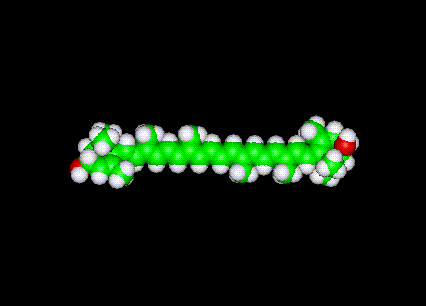Lutein and zeaxanthin
Lutein and zeaxanthin belong to the class of carotenoids known as xanthophylls and both contain hydroxyl groups. This makes them more polar than carotenoids, such as beta-carotene and lycopene, which do not contain oxygen. Although lutein and zeaxanthin have identical chemical formulas and are isomers, they are not stereoisomers. They are both polyisoprenoids containing 40 carbon atoms and cyclic structures at each end of their conjugated chains. The main difference between them is in the location of a double bond in one of the end rings giving lutein three chiral centers as opposed to two in zeaxanthin (see structure below).
 Zeaxanthin
Structure
Zeaxanthin
Structure

